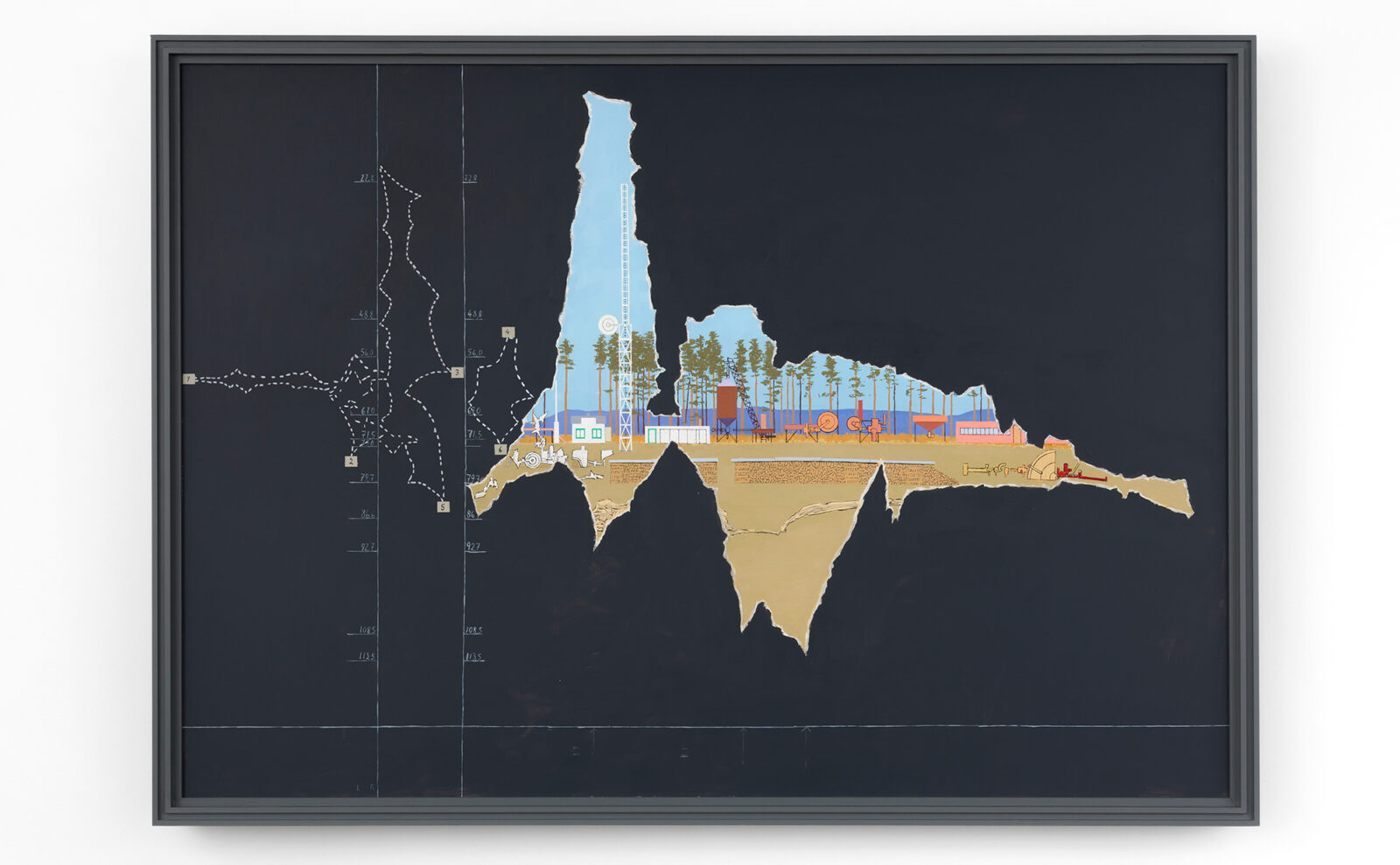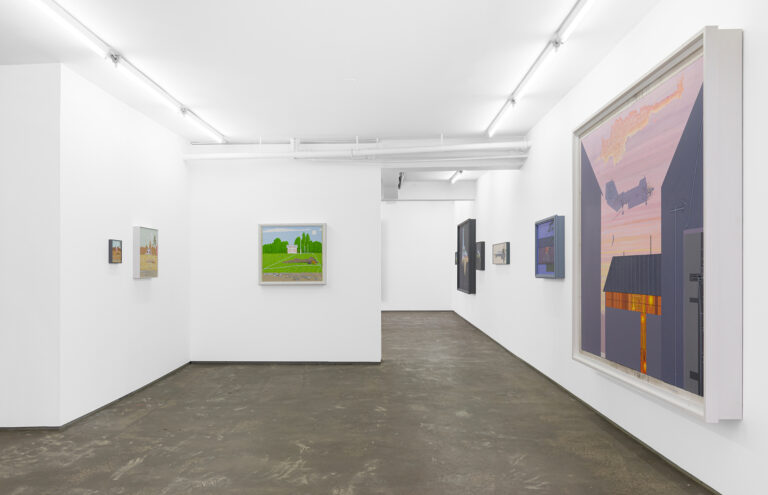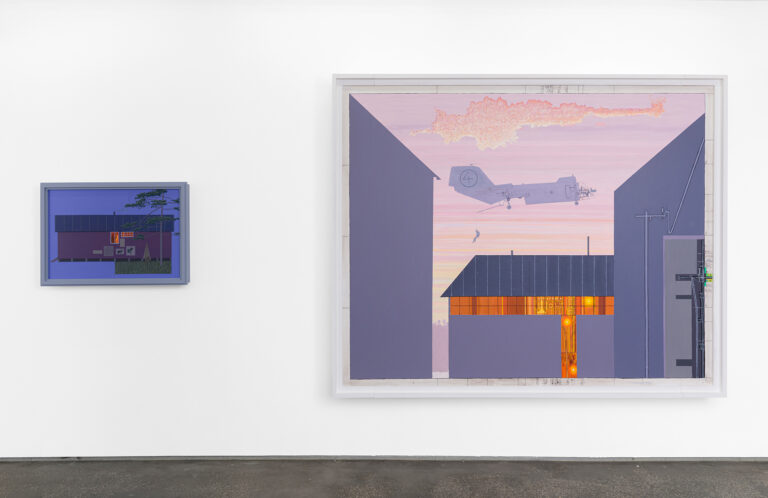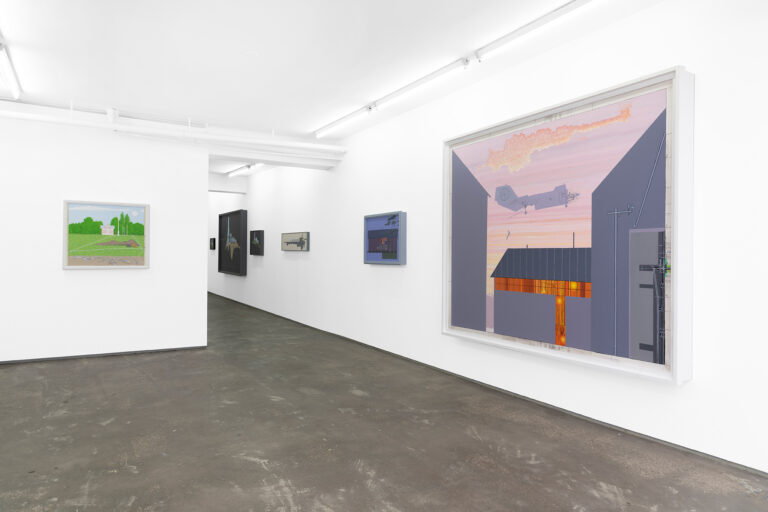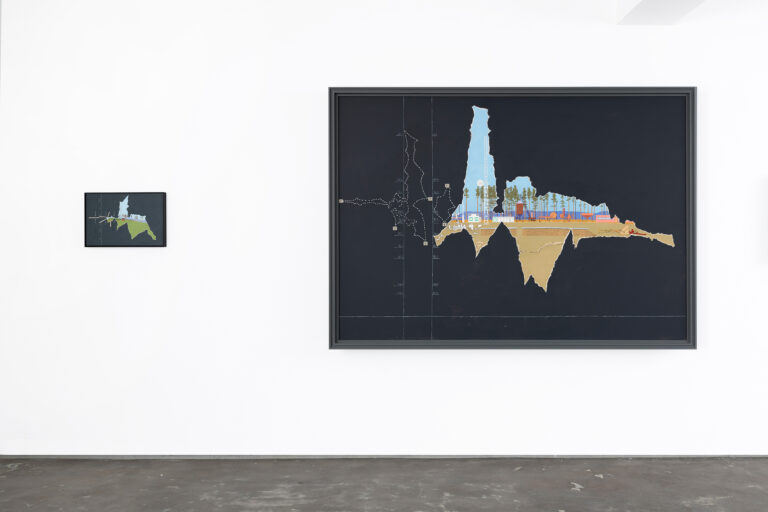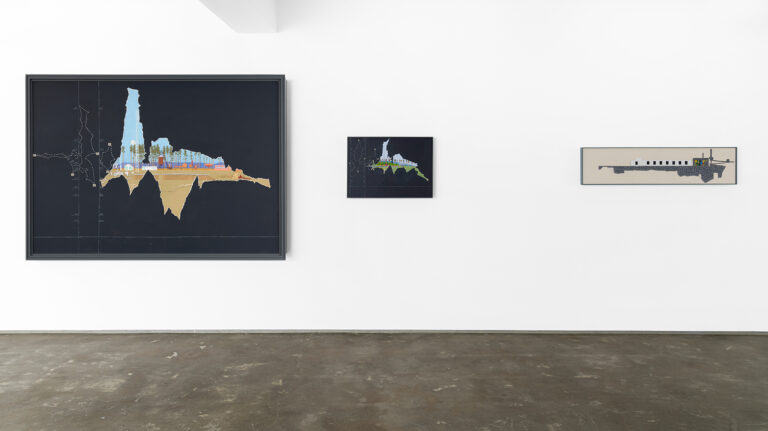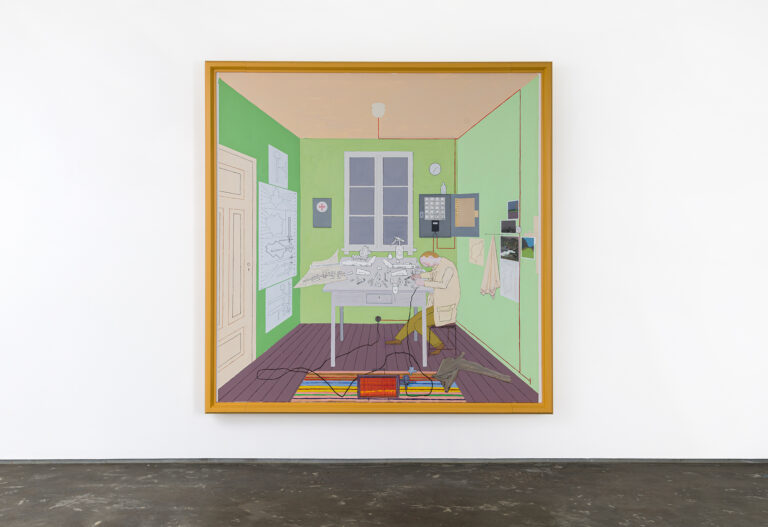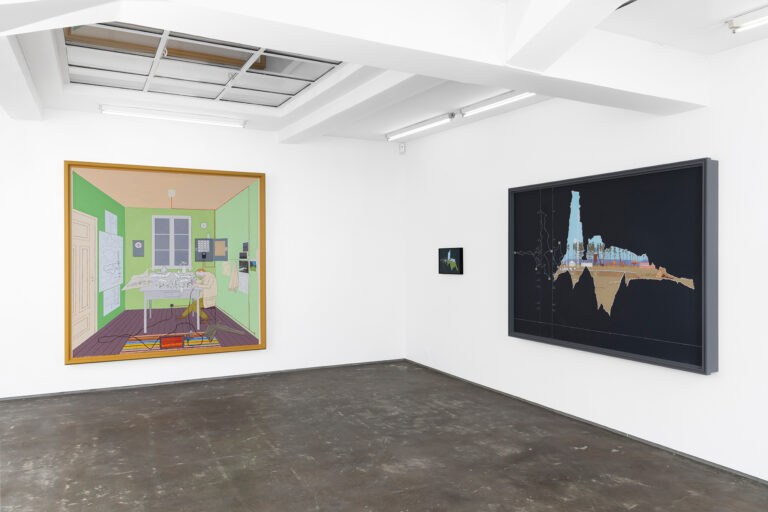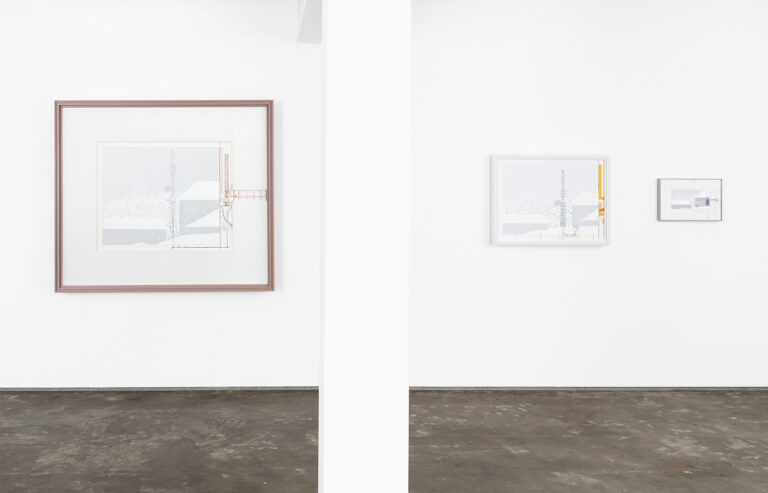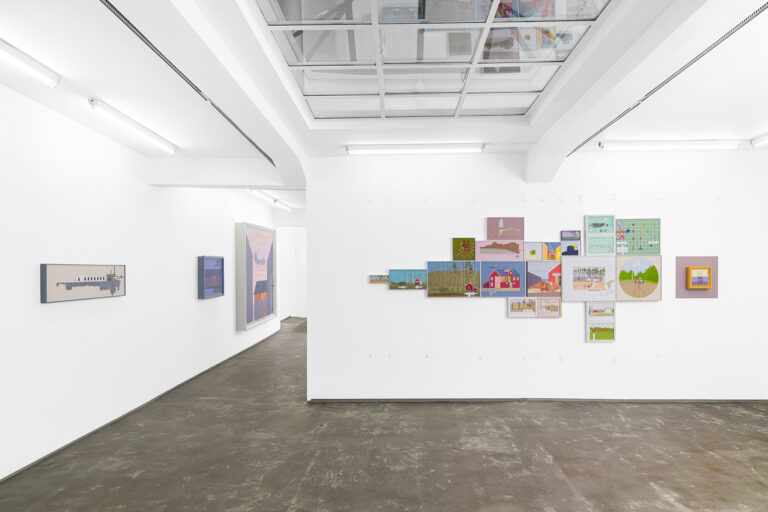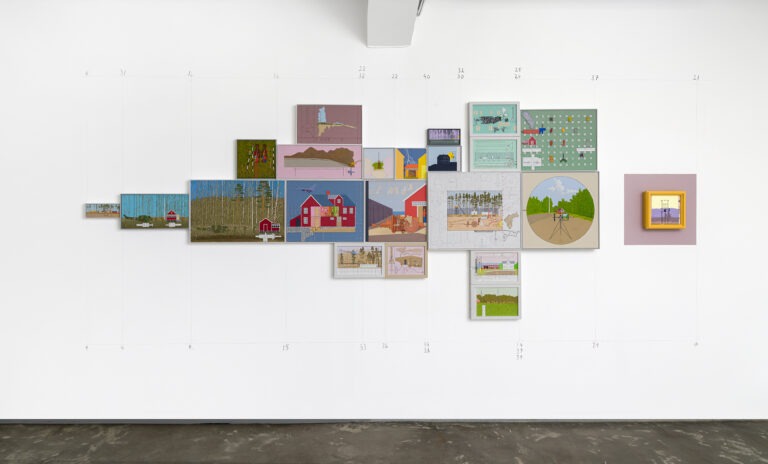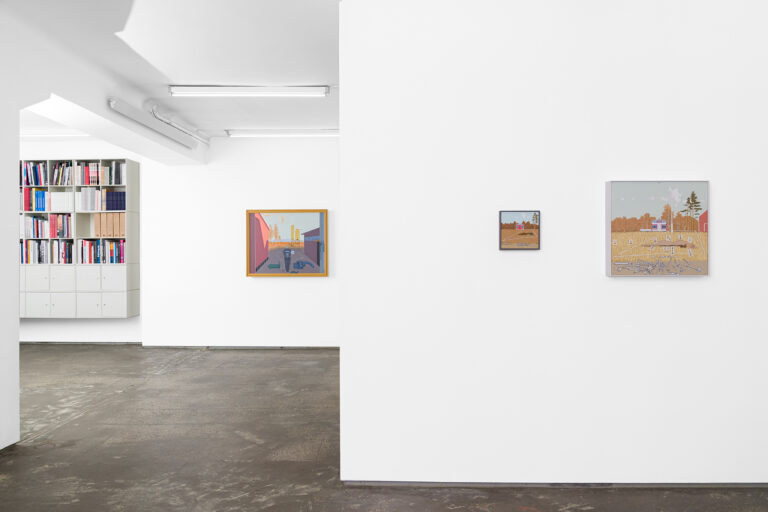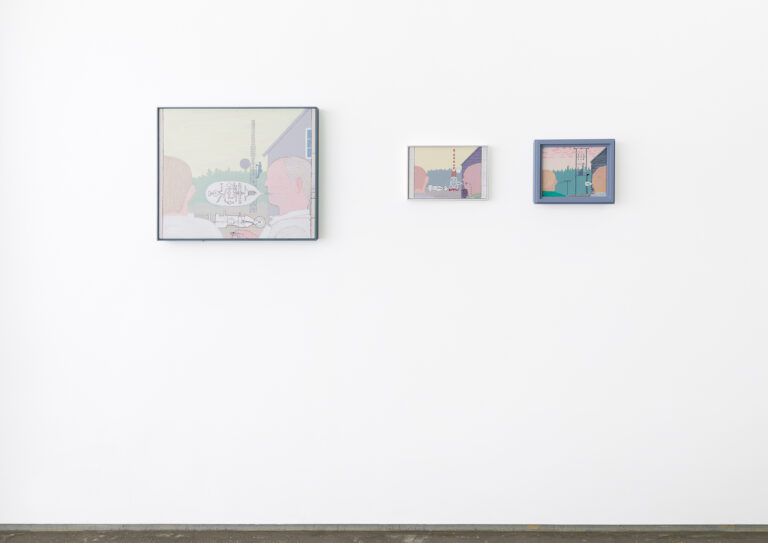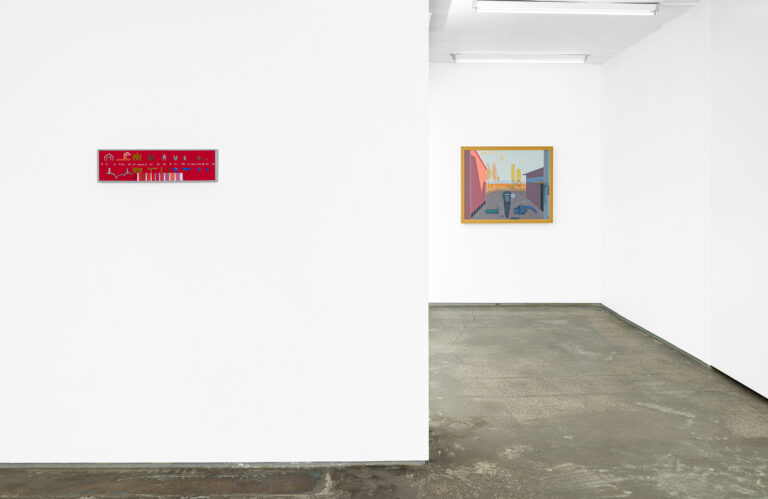OSL contemporary is proud to present its fourth exhibition by Leonard Rickhard.The exhibition will be on view from 4 December 2020 to 6 February 2021.
Leonard Rickhard’s New Paintings
Text by Jorunn Veiteberg
The model aircraft builder is a well known motif for anyone who is familiar with Leonard Rickhard’s art. He has depicted model aircraft builders since the 1980s, either passionately engaged or extremely tired. In this new version, the model aircraft builder is a grown man bent over his workbench in deep concentration. The title “The Model Aircraft Builder after Midnight” conveys what must have been a long day’s work. We are no longer in homely surroundings. Except for the colourful rug on the floor, the room is cold and impersonal. Some well known props from Rickhard’s pictorial universe are present, such as a fuse box, a first aid box, and a towel. There are several images within the image: technical working drawings fill one of the walls and opposite these there are photos or reproductions of landscapes. In this way, Rickhard ties together two different ways of analysing the world: the technical, scientific way with its systems of measurement, diagrams, numbers, and construction lines and the spatial reality as it looks through the lens of a camera.
Parts and tools are spread out across the model aircraft builder’s table. Everything is dispersed and fragmented, but the aim is probably to create order out of the chaos. It is tempting to interpret the model aircraft builder as an allegory of the artist himself. A painting also consists of parts and details that are to be organised into a coherent and meaningful whole. In an interview, Rickhard described artistic work as a battle. It takes time, concentration, and solitude. Exactly what the model aircraft builder radiates. Likewise, the work table is a miniature version of the artist’s universe of motifs. Rickhard often paints landscapes where machine parts and unrecognisable fragments are spread out, commonly with a helicopter in the air or on the ground. This exhibition also incorporates several paintings depicting planes, barracks, masts, and factories. There is something disturbing about many of these scenes. Rickhard is a master of creating mystifying moods.
While “The Model Aircraft Builder after Midnight” is like a peep show where the fourth wall has been removed so that we can peek in, another central work of the exhibition, “Glued on Landscape against a Black Background”, creates the sensation of peering out. A black surface covers most of the painting, but in the middle a jagged tear appears from which a landscape with machines, trees, fields, and blue skies emerges. This landscape scene looks like it might have been torn out of another picture and glued on, as the title suggests, but the black background is as much a foreground as a background, so we suddenly seem to be in a cave peering out. The fact that Rickhard purposefully plays on this ambiguous reading is supported by the form of the tear, which paraphrases the opening of the cave in Leonardo da Vinci’s famous painting “The Virgin of the Rocks” (1483–1486).
To be a painter is to fall into place with a tradition that is centuries-old. Rickhard is fully aware of this and demonstrates it through an active dialogue with Art History. It can be a heavy heritage to uphold, and there is a high degree of seriousness in Rickhard’s attitude to his métier. This is a valuable quality in our times, where art, too, increasingly is subject to pressure from our experience society’s expectations of spectacles and entertainment. Rickhard is a classical artist also in the sense that he believes in the critical function of art and its existential importance. But the seriousness does not exclude a lighter mood. In the smaller paintings, especially, there are references to more populist genres, such as marine painting and other naive art, which contain a joy of painting that he is able to appreciate.
There are, in particular, two main juxtaposing tendencies in the history of painting: that of realism and that of abstraction, between the painting as a window to the world and painting as a flat surface. Rickhard draws from both these traditions in every painting and in this way creates a visual tension between space and surface. Returning to “The Model Aircraft Builder after Midnight”, the space in this is neither illusionistic nor realistic, if you like, because the perspective is clearly twisted and the table turned upwards. These are tactics that make us aware of the constructed elements of illusion. Large, clear fields of colour are his most important means in order to emphasise the flatness. At the same time, the colours are also important for the mood and the emotional appeal. He has a distinctive colourisation and over the years the colours have become more elaborate, luminous, and suggestive. The colours and composition together add a sensory power to the paintings that gives them a visual tenacity.
Repetition of the same motifs, from drawings to smaller paintings and in turn to monumental pieces, gives us insight into the artistic processes with their many different phases of exploration. As viewers, we can easily identify much of what happens in this pictorial universe, but do we understand it? We see the traces in the landscape of human activities linked to gravel pits, saw mills, electricity posts, and machine stations, and most of all, to war equipment. We understand that this is about the artist’s memories of a childhood in the shadow of the Second World War. We also understand that he is presenting a landscape painting to us that equals the blue twilight atmosphere of Harald Sohlberg, but at the same time is about the present, which offers something other than untouched and idyllic nature. Moreover, there is a lot that defies logical explanation, as if the paintings have their own secrets that they are loathe to give up, but which makes them no less fascinating.
Leonard Rickhard, born 1945, Tvedestrand, was educated at the Statens Håndverks- og Kunstindustriskole 1966–67, and at the Statens kunstakademi 1967–71. He made his debut at Kunstnerforbundet in 1974, and in the early 1980s he was already considered one of the leading artists of his generation. Rickhard has exhibited in all major Norwegian art institutions, and has had solo exhibitions at among others ARoS Aarhus Kunstmuseum (2016), Bomuldsfabriken Kunsthall (2012), Bergen Kunsthall (2009),Haugar Vestfold Kunstmuseum (2008), Sørlandets Kunstmuseum (2005), Nasjonalgalleriet (2004), Astrup Fearnley Museet (2001), Lillehammer Kunstmuseum (1996), Kunstnernes Hus / Stavanger Kunstmuseum (1995). Rickhard has received several awards, among them the Order of St. Olav and the Prince Eugen Medal, and in 2015 he received Anders Jahre’s culture price, and his works are included in numerous collections, both private and institutional.
